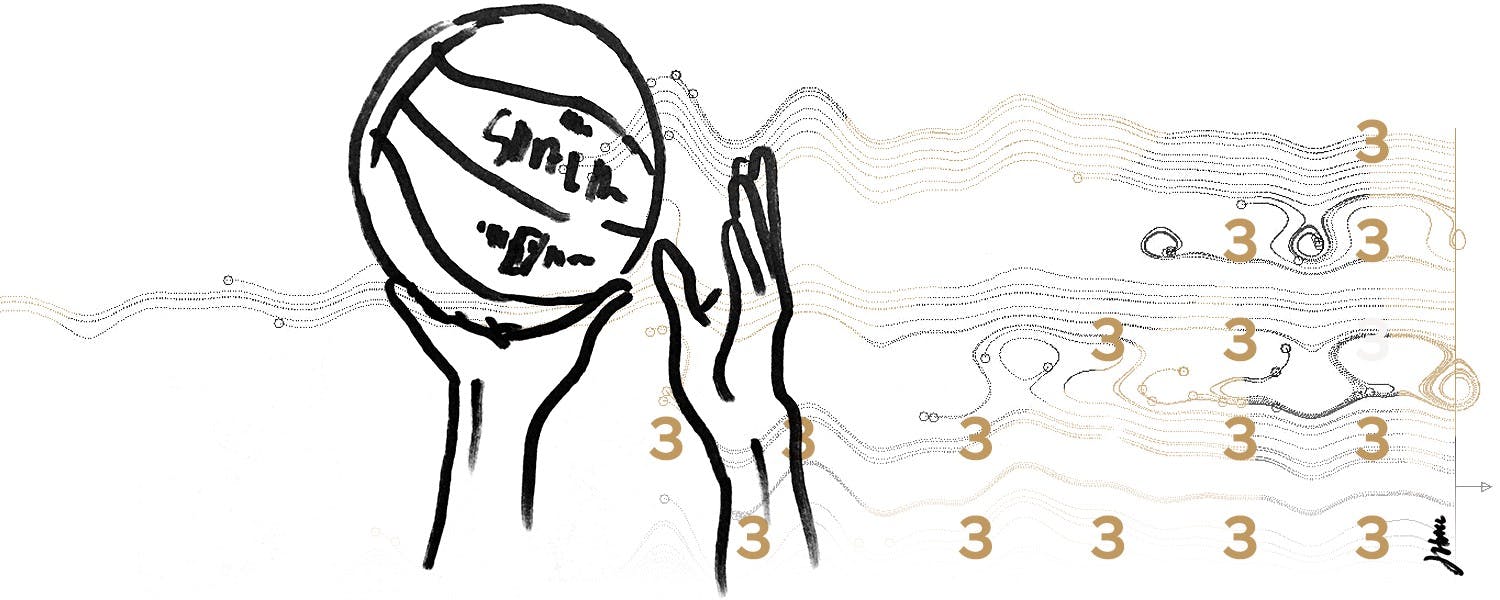
It’s difficult to imagine basketball without the three-point shot. But before 1967, it didn’t exist. When the American Basketball Association established the three-point arc in 1967, it remade the game.
As the great people at 99% Invisible note, the three-point shot “critically changed the dynamic on the court.” No longer did players amass right under the net, looking to make a surer shot. Instead, shorter, faster players were rewarded for moving outside.
The added diversity and extra value of the three-point shot created the fast-paced, dynamic sport we know today.
Add Value, Change Dynamics
To me, the story of the three-point shot parallels why point values matter in an online course. Just as the three-point line changed the landscape of the court, point values in a course create a terrain of value that helps your learners focus.
In short, points send value signals to your learners to help them pay attention. The bigger the learning outcomes and the further we have to travel from point A to point B, the more important it is to understand the value of each learning activity.
Your learners will benefit when they understand what’s intentionally practice and what activities have higher stakes. Varying these point values through the course also gives your learners a chance to relax in certain activities and ramp up efforts in others.
Create Practice Space and Reward Action
A few factors influence point values. First, I match value to activity. Short readings and videos warrant fewer points. But if a learner contributes to a discussion or writes a reflection, I often double the point value of that step. The increase in points signals that I notice their extra effort.
I also increase points as the course goes on. Early on, assignments carry less weight. Learners should feel comfortable trying new things, making mistakes, and finding out what they don’t know so we can fill in the gaps together.
In other words, lower point values early on signal that learners are in practice mode. Later in the course, point values will match their increased intensity and skill.
The overall effect is an ebb and flow that engages and re-engages learners at every step. With simple value reminders and small feelings of accomplishment along the way, we help learners reach their smallest and biggest goals.
If you’d like to create dynamic, engaging online courses, you can try Pathwright for free.
Using Pathwright is dead simple and doesn’t cost a thing until you’re ready to launch a path.
Get startedTopics in this article
